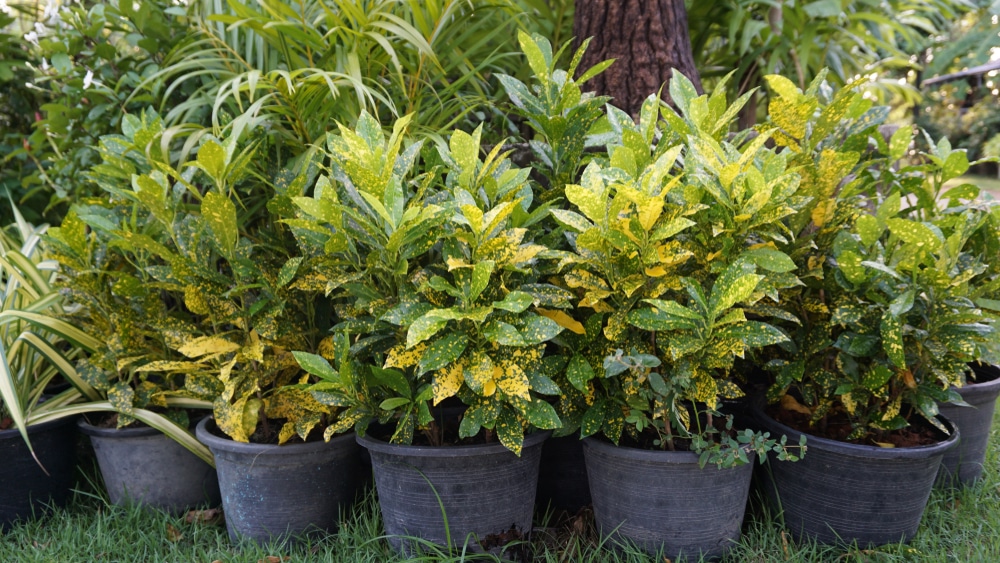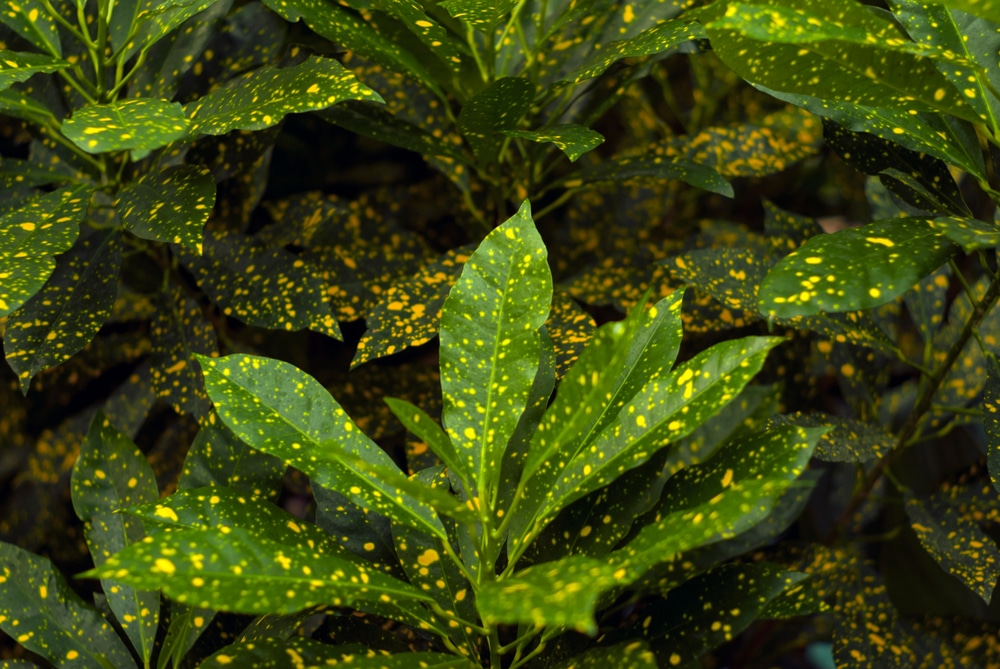Crotons are beautiful tropical plants native to Southeast Asia and Oceania. They can be challenging to care for and even more difficult to propagate. Keep reading to explore the best ways to propagate your Croton plant and maintain the health of all your plants.
What Is Croton?
Crotons reach up to 10 feet tall in the wild but will not grow quite that large in your home or garden. These plants are easy to grow. They have attractive, multi-colored leaves that are usually a combination of red, yellow, green, and orange. There are many varieties of Croton, including Banana Croton, Bush on Fire Croton, Petra Croton, Mammy Croton, and Gold Dust Croton.
Remember that all parts of this plant, including the seeds, are poisonous.
Why Propagate a Croton Plant?
You might want to propagate a Croton plant because you already own one and would like to have another, or more than one another, for free. You can expand your collection of houseplants or give one or more as gifts.
Crotons are not the easiest plants to propagate, but they are also not the hardest. We will explore a few key factors to consider before trying to propagate your plants below. They include the required supplies, time of year, and best methods associated with propagating this beautiful plant.
When To Propagate Croton
The best time to propagate Croton is from late winter to early spring; March is an especially good choice. The plants thrive during spring, meaning that it is more likely they will survive propagation. It is paramount only to propagate a Croton plant when it is mature. If you try these techniques with an immature plant, it likely will die.
Requirements To Propagate Croton
One of the most paramount requirements for successfully propagating a Croton plant is to have a thriving Croton already. If you try to propagate an immature plant or one that is sickly, it may not survive. In addition to the original plant, some of the materials you are going to need to propagate your plant are:
- Knife
- Pot with fresh soil for the new plant
- Plastic bag
- A disinfectant like rubbing alcohol
Best Methods for Propagating Croton
There are a couple of different methods used to propagate Croton plants. The stem cutting method is the most popular.
Stem Cutting Method
With the stem cutting method, use a knife and make a stem cutting. It should be 3-4 inches with 3-5 leaves. Transplant this cutting into your new pot with fresh soil. The new rooting should appear within a month.
Air Layering Method
This method is best for those with particularly bushy Croton plants. But you will also need a few more materials, like sphagnum moss.
The first step is to cut a ½-inch to 1-inch strip around the stem below a growth node on the original plant. Then, you will want to wrap the entire cut area with damp sphagnum moss. The easiest way to secure it is with floral ties or twine.
Next, take plastic wrap and cover the entire section to keep the moisture inside the moss. It will take a few weeks to months for the plant’s new roots to appear. Once they do, remove the plant material and pot it like normal.
Petiole Rooting
The final method is to propagate your Croton plant through petiole rooting. To complete this process, remove a leaf from the plant and trim up to around 1 inch of the petiole. Place the leaf in water. Over the next few weeks, roots will start to develop. Plant the new Croton as soon as you see roots developing.
How to Care For Newly Propagated Crotons
Crotons are notorious as difficult plants to care for. Their care is even trickier when you’re faced with newly propagated plants. Here are a few tips for caring for your newly propagated plants:
- It is paramount to keep the plant somewhere with indirect sunlight. But no matter where you put it, any extreme environmental change may affect it.
- The ideal temperature is between 60 and 85 degrees F.
- Your plant will benefit from a humidifier nearby.
- Water when the top 2-3 inches of soil are dry
- The potting mix should be organic compost and peat moss. An all-purpose fertilizer is also helpful. But, make sure to dilute it with water and only use it once a month.

